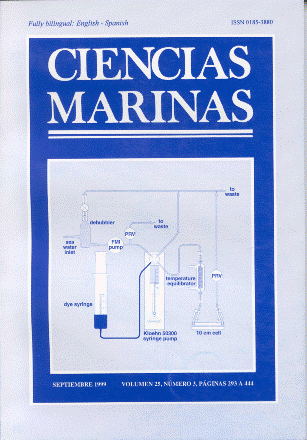Application of a hydrodynamic model to a coastal zone
Main Article Content
Abstract
This study describes the results of a numerical simulation of the hydrodynamic behavior of cooling water discharged into the sea from the Tuxpan Power Plant under two different meteorological and oceanographic conditions: case I, southwesterly variable winds with an average velocity of 3 m s–1 and case II, northwesterly variable winds with an average velocity of 11.1 m s–1. The numerical simulations were made using a three-dimensional hydrodynamic model of coastal circulation and heat exchange. The southerly winds induce a sea surface circulation towards the north, which moves the discharged warm water away from the intake. The northerly winds, however, drive the hydrothermal effluent towards the intake. Comparisons between the numerical simulation results and field data show that the model correctly predicts the surface diffusion and dispersion of the hydrothermal effluents measured August 18 to 21, 1992 (case I) and November 24 to 27, 1992 (case II). The model predicts the extent of the areas impacted with cooling water with a precision of ±11%. For all the cases analyzed, the real size of the impacted areas that might have adverse effects on the marine ecosystems was not greater than 100 m2. Thus, these possible adverse effects are considered to be of local significance only. The simulated vertical profiles of temperature show that the discharged cooling water remains mostly on the surface of the receiving water mass and reaches a maximum depth of 3.5 m.
Downloads
Article Details
This is an open access article distributed under a Creative Commons Attribution 4.0 License, which allows you to share and adapt the work, as long as you give appropriate credit to the original author(s) and the source, provide a link to the Creative Commons license, and indicate if changes were made. Figures, tables and other elements in the article are included in the article’s CC BY 4.0 license, unless otherwise indicated. The journal title is protected by copyrights and not subject to this license. Full license deed can be viewed here.

